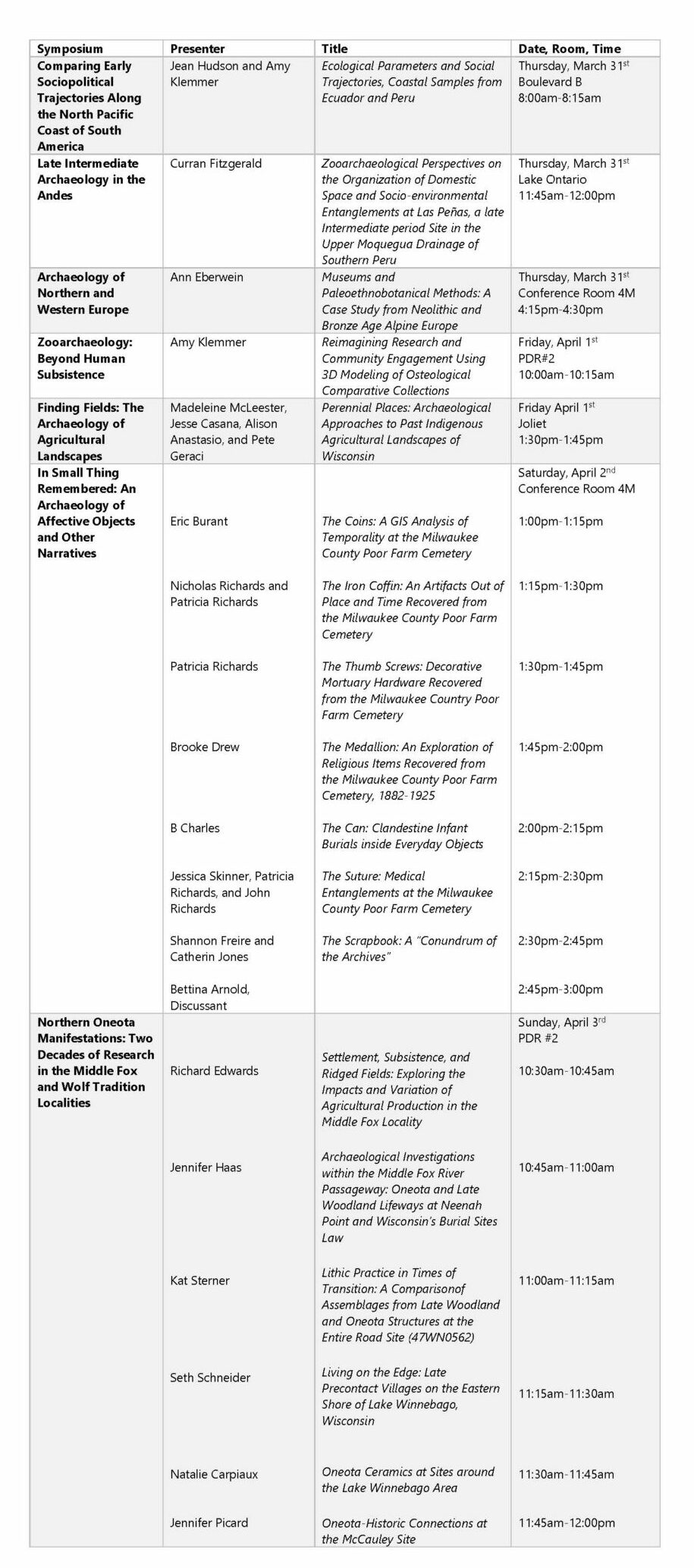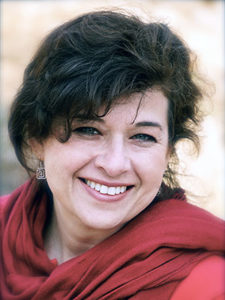
By Aislinn Sanders
UWM Researchers are planning a big presence at this year’s 87th Annual Meeting of the Society for American Archaeology (SAA). The meeting is the largest in the country and will take place in Chicago, Illinois between March 30th, and April 3rd at the Hilton Chicago, 720 S. Michigan Avenue. Symposium abstract topics include career options post-graduation, approaching adolescence from an archaeological and bioarcheological framework, archaeological ethics, and Southeast Asian archaeology, among many other topics. The full list can be found here. First time Meeting goers are encouraged to attend the info session held from 5:30pm to 6:00pm on Wednesday, March 30th in the Astoria Room. Public Archaeology Day will be held on Saturday, April 2 for any members of the public to explore archaeology through a self-guided walking tour of Chicago, online videos, and downloadable activities.
This year, faculty and students from UWM have organized three symposia, will participate in five additional symposia, and will be presenting a total of 14 research topics over the course of the meetings. These symposia will take place throughout the weekend.

Dawn Scher Thomae, senior lecturer, Co-Coordinator of the Museum Studies Graduate Certificate Program, and Curator of Anthropology Collections for the Milwaukee Public Museum will be receiving an award for Excellence in Collections-based Research and Education. She is being recognized for her positive impact to the lives of her students and interns through hands-on museum experience, and to the museum field as a whole.
For more information about SAA and the Annual Meeting, click here!.
Here is the list of UWM-related individual and group abstracts:
Natalie Carpiaux – Oneota Ceramics at Sites around the Lake Winnebago Area
Ann Eberwein – Museums and Paleoethnobotanical Methods: A Case Study from Neolithic and Bronze Age Alpine Europe
Richard Edwards – Settlement, Subsistence, and Ridged Fields: Exploring the Impacts and Variation of Agricultural Production in the Middle Fox Locality
Curran Fitgerald – Zooarchaeological Perspectives on the Organization of Domestic Space and Socio-environmental Entanglements at Las Peñas, a late Intermediate period Site in the Upper Moquegua Drainage of Southern Peru
Shannon Freire and Catherine Jones – The Scrapbook: A “Conundrum of the Archives”
Jennifer Haas – Archaeological Investigations within the Middle Fox River Passageway: Oneota and Late Woodland Lifeways in Neenah Point and Wisconsin’s Burial Sites Law
Jean Hudson and Amy Klemmer – Ecological Parameters and Social Trajectories, Coastal Samples from Ecuador and Peru
Amy Klemmer – Reimagining Research and Community Engagement Using 3D Modeling of Osteological Comparative Collections
Madeleine McLeester (Dartmouth College), Jesse Casanas (Dartmouth College) Alison Anastasio (University of Chicago) and Pete Geraci – Perennial Places: Archaeological Approaches to Past Indigenous Agricultural Landscapes of Wisconsin
Jennifer Picard – Oneota-Historic Connections at the McCauley Site
Nicholas Richards (UDC Inc.) and Patricia Richards – The Iron Coffin: An Artifact Out of Place and Time Recovered from the Milwaukee Country Poor Farm Cemetery
Patricia Richards – The Thumb Screws: Decorative Mortuary Hardware Recovered from the Milwaukee Country Poor Farm Cemetery
Seth Schneider – Living on the Edge: Late Precontact Villages on the Eastern Shore of Lake Winnebago, Wisconsin
Jessica Skinner (Mayo Clinic), Patricia Richards, and John Richards (University of Wisconsin) – The Suture: Medical Entanglements at the Milwaukee County Poor Farm Cemetery
Kat Sterner – Lithic Practice in Times of Transition: A Comparisonof Assemblages from Late Woodland and Oneota Structures at the Entire Road Site (47WN0562)
Christina Zweig – Beyond Boundaries: Internments Outside of Historic Cemeteries in Wisconsin